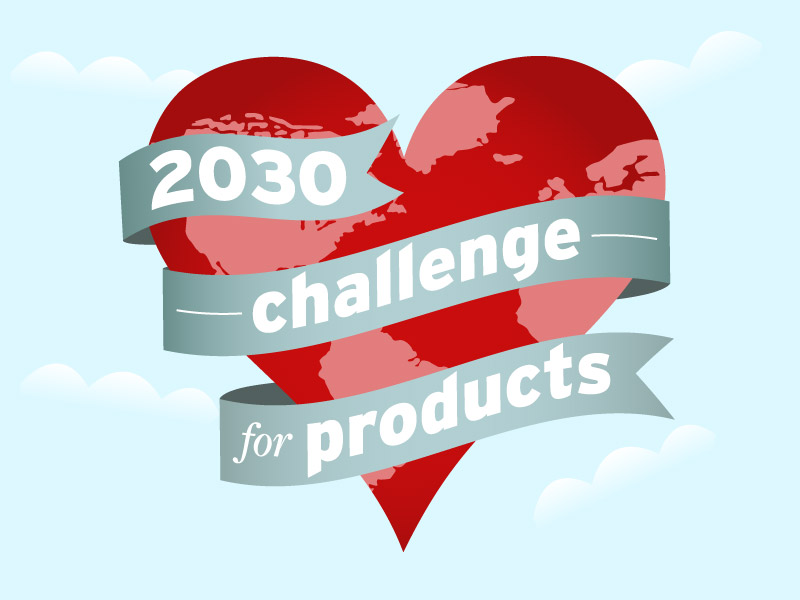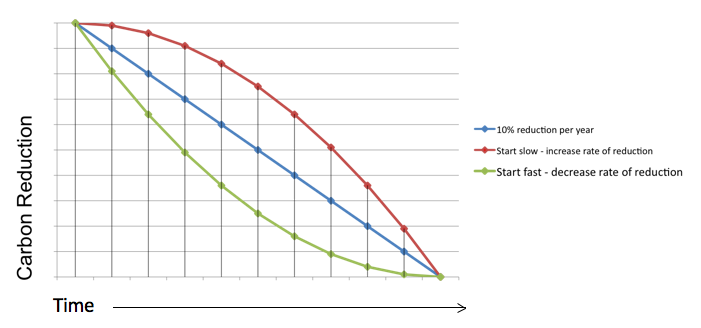Blog Post
Reducing the Carbon Emissions of Products Through the 2030 Challenge

All right, it's not a product. But the 2030 Challenge for Products, announced today by Ed Mazria's organization, Architecture 2030, BuildingGreen, and others, promises to make a lot of products a lot greener.
The 2030 Challenge for Products addresses carbon (and carbon-equivalent) emissions that go into producing and transporting building products. This is mostly a function of the embodied energy of products, but also can include other non-CO2 constituents with significant global warming potential (GWP), such as the HFC blowing agents in extruded polystyrene (XPS) and closed-cell spray polyurethane foam (SPF) insulation materials--about which there's a great discussion online.
The 2030 Challenge for Products builds on the success of the 2030 Challenge for buildings (see below), but rather than focus on carbon emissions from building operations, this new Challenge addresses emissions that are embodied in building products. Specifically, the 2030 Challenge for Products calls for the architecture, planning, design, and building community to specify, design, and manufacture products whose carbon footprint, compared to industry-wide baseline averages, has been reduced 30% by 2014; 35% by 2015; 40% by 2020; 45% by 2025; and 50% by 2030. Thus, the target is to be producing and using building products by 2030 that result in just half of the carbon emissions of today's products.
Why reducing embodied carbon is important The embodied energy (and embodied carbon) of building materials has always been important, but as we create more energy-efficient buildings, the proportion of total energy use and carbon emissions associated with manufacture and transport of the materials going into those buildings becomes more important. With a carbon-neutral building, for example, 100% of the carbon emissions associated with that building comes from the materials going into it and the process of building it. The more energy efficient our buildings, the more important it is for us to look at materials for further carbon emission reductions.
According to Architecture 2030, 5% to 8% of total energy consumption and greenhouse gas emissions in the U.S. result from the manufacture and transport of building products and the construction of buildings. Cutting those emissions in half would be like permanently shutting down 222 coal-fired power plants.
Another great feature of addressing the embodied carbon of materials is that reductions in carbon emissions of materials have an immediate benefit, while the carbon reductions through enrgy-saving operations are accrued over a long period of time (see illustration). The goal is to reduce the total quantity of carbon dioxide getting into the atmosphere and do it as quickly as possible. A metric ton of carbon dioxide reduction today is worth more than a metric ton of savings spread over the next 50 years, so reducing embodied carbon emissions of materials has a very important role to play in slowing global warming.
SUPPORT INDEPENDENT SUSTAINABILITY REPORTING
BuildingGreen relies on our premium members, not on advertisers. Help make our work possible.
See membership options »
Nuts and bolts
Manufacturers wishing to participate in the 2030 Challenge for Products will have to commission a life-cycle assessment (LCA) of at least one product, calculating its carbon footprint. Architecture 2030, with collaborating organizations, will use this information to establish industry-average benchmarks for all of the major product categories. These benchmarks are referred to as "product category rules" (PCRs).
Our company, BuildingGreen, will be working with Architecture 2030 to develop those benchmarks and to report on compliance with the 2030 Challenge through our online GreenSpec resource. Look for details of all this over the coming months.
If it's being done it must be possible
A number of building product manufacturers, including Interface Carpet, are already producing (nearly) carbon-neutral products, through a combination of energy efficiency improvements, on-site renewable energy systems, and the purchase of carbon offsets. If it's being done it must be possible! The 2030 Challenge for Products doesn't require manufacturing to be carbon-neutral; it only requires a 50% reduction from current averages. It remains to be seen exactly how the rules develop--especially to what extent manufacturers will be able to rely on carbon offsets in achieving the targets.
Ed Mazria, FAIA, launched the 2030 Challenge for buildings five years ago, and has achieved remarkable buy-in to the goals of that Challenge. The building challenge calls for reducing the carbon dioxide emissions from buildings at the design phase, with a phased reduction that will lead to carbon-neutral buildings by the year 2030. The American Institute of Architects (AIA) and the U.S. Conference of Mayors have explicitly adopted the 2030 Challenge for buildings, and Section 433 of the Energy Independence and Security Act, signed into law by President George W. Bush in 2007, requires that all federal buildings follow the carbon-reduction goals laid out in the 2030 Challenge. Three-quarters of the 30 largest architecture and engineering (A&E) firms have also signed onto the Challenge, and it has directly or indirectly influenced the policies of a veritable panoply of acronyms, including the USGBC, ASHRAE, ASID, and CNU.
For more information:
Architecture 2030
Santa Fe, New Mexico
505-988-5309
Alex Wilson is the executive editor of Environmental Building News and founder of BuildingGreen, Inc. In addition to contributing to this product-of-the week blog, he writes the weekly Energy Solutions blog. To keep up with his latest articles and musings, you can sign up for his Twitter feed. Products covered in his product-of-the-week column are--or soon will be--listed in BuildingGreen's GreenSpec Directory.
Published February 14, 2011 Permalink Citation
(2011, February 14). Reducing the Carbon Emissions of Products Through the 2030 Challenge. Retrieved from https://www.buildinggreen.com/blog/reducing-carbon-emissions-products-through-2030-challenge



Add new comment
To post a comment, you need to register for a BuildingGreen Basic membership (free) or login to your existing profile.